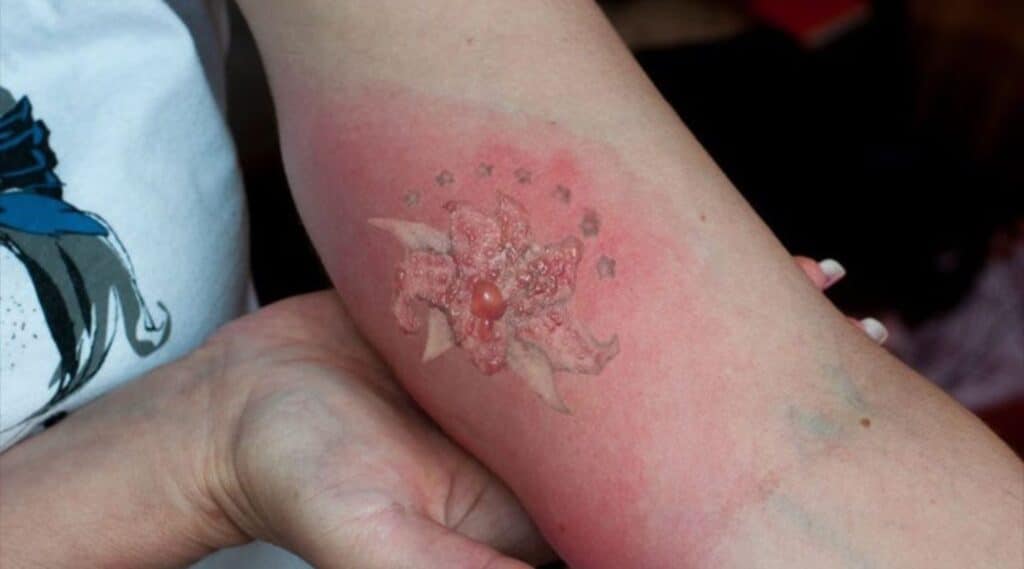Featured image credit: mymed.com
While tattooing has become safer than it has ever been thanks to strides made in regulations, procedures, and technology, there still remain many potential risks associated with the art form.
Thankfully, even though there are millions of tattoos done each and every year, only a very small percentage is estimated to cause issues. These issues can range from minor infections to more severe allergic reactions.
But what exactly causes these issues, and how can you try to avoid them? Let’s find out.
Infection Risks
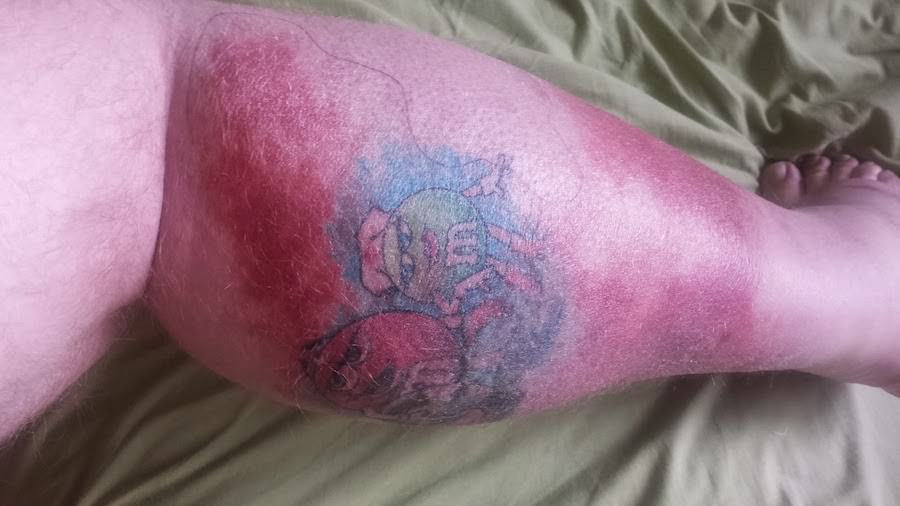
Photo credit: Authority Tattoo
If your tattooing procedure isn’t done under proper hygienic standards, you will run the risk of being exposed to multiple types of infections.
These infections can be caused by contaminated equipment, improper aftercare, and other unhygienic practices such as disposal of materials and cleaning of surfaces.
The most common infections you might encounter in an unhygienic tattooing parlor are bacterial infections, viral infections, and fungal infections.
Bacterial infections are often caused by Staphylococcus bacteria. This can lead to conditions ranging from mild skin irritation to serious infections like MRSA.
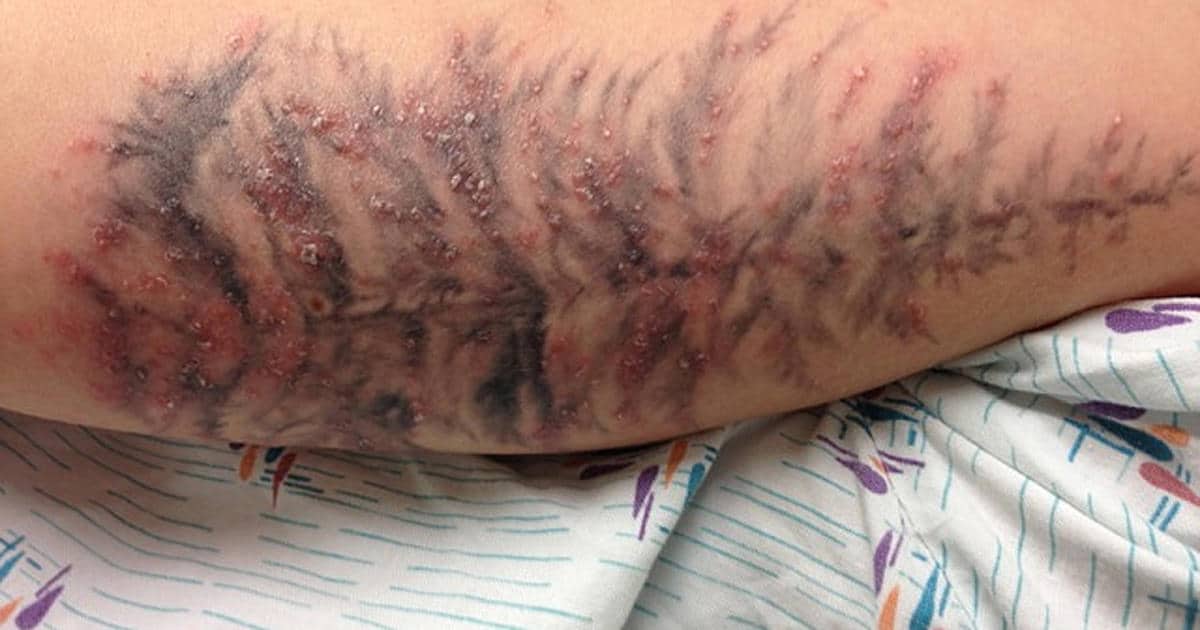
Photo credit: CBS News
If tattooing equipment is reused or improperly sterilized, you are at serious risk for viral infections such as hepatitis B, hepatitis C, and HIV.
Lastly, while less common, if tattooing equipment is not sterilized properly or left in moist conditions, you are also at risk of contracting a fungal infection.
Allergic Reactions Of Tattooing
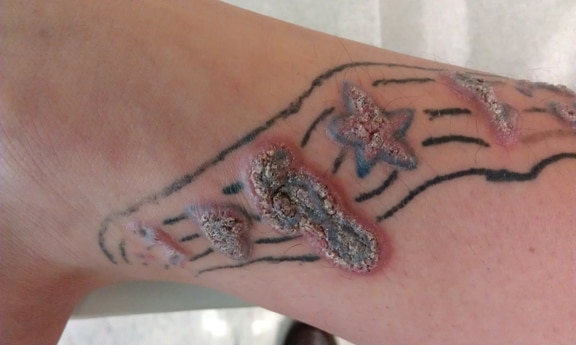
Photo credit: Lasting Looks Clinic
While not as common as infections, allergic reactions are a serious consideration that some people aren’t even aware of that must be considered before undergoing a tattooing procedure.
Some tattoo inks contain allergens like nickel, chromium, mercury, and other industrial dyes that can be potentially hazardous to those prone to allergic reactions to these materials.
Red and yellow ink, in particular, are notorious for causing allergic reactions due to red ink containing mercury sulfide and yellow ink containing cadmium sulfide.
While not extremely common, these can still pose significant risks, such as phototoxic and photoallergic reactions.
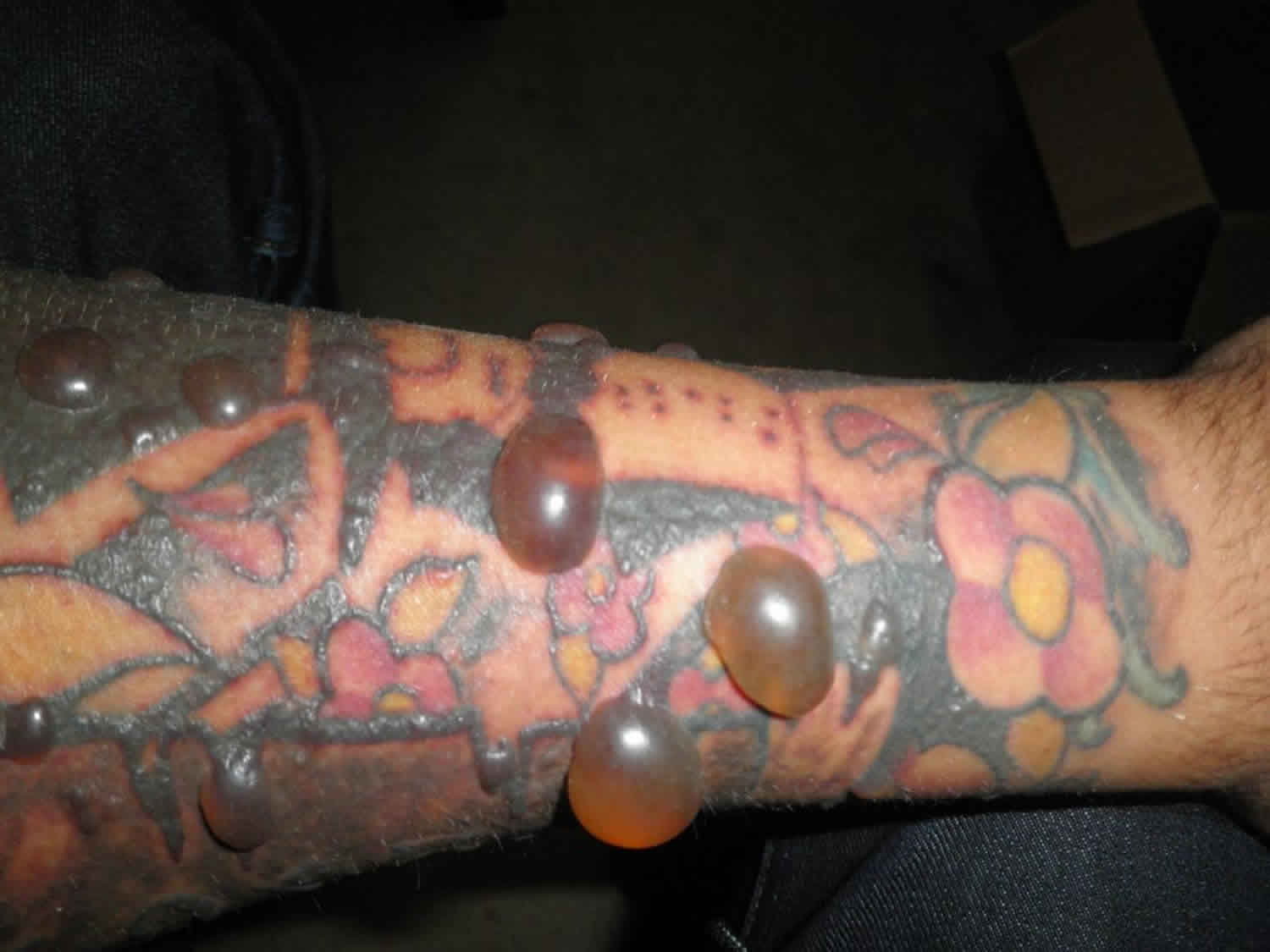
Photo credit: Health Jade
Those who are already prone to skin conditions or allergies are also more susceptible to reactions.
Allergic reactions can manifest as redness, swelling, or an itchy rash at the tattoo site shortly after the tattoo is done.
In contrast, other reactions, such as dermatitis, may appear days or weeks later and are characterized by severe itching, blistering, or peeling.
Long-Term Complications
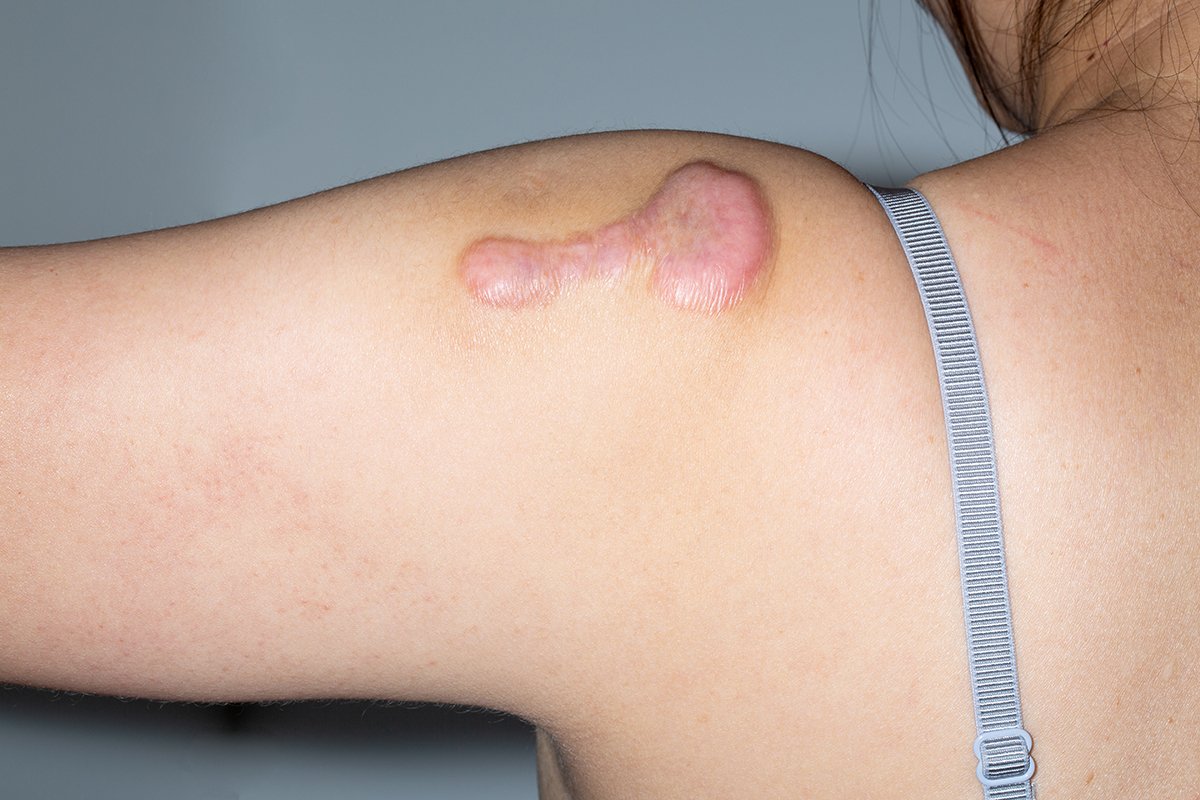
Photo credit: www.nhs.uk
Tattooing can sometimes lead to the formation of scars and overgrowths known as keloids. These can appear if the healing process is disrupted.
Keloids appear as raised areas on the skin that can develop after tattooing, particularly in individuals prone to them, like those with darker skin tones.
If you need to have an MRI scan, certain pigments containing metals can cause complications during the procedure.
The metal particles in certain inks can react to the MRI’s magnetic field, potentially causing skin irritation or burns.
While the most common issue is a warming sensation on the tattooed area, more severe reactions like burns can occur, although rarely.
It is also important to consider that not all countries share the same rules and regulations.
Approach with caution, as there can be safety issues regarding the chemical compounds found in these inks as they could be potentially hazardous substances.
Social and Professional Implications
While attitudes towards tattoos have changed to be more accepting of tattooing recently, visible tattoos can still impact job opportunities in certain industries.

Photo credit: usatoday.com
Law enforcement, healthcare, and corporate sectors often have strict policies towards visible tattoos.
Researching company policies on tattoos before applying and considering the placement of tattoos can help mitigate potential career obstacles.
Tattoos can also influence social interactions, affecting how others might perceive you.
In some cultures, tattoos can lead to stereotypes or misconceptions, so consider what kind of tattoo you are getting and how it may affect you socially if its design is considered more risky.
Conclusion
While tattooing has indeed become safer with advancements in technology and regulation, it is still important to consider the risks associated with the art form.
If you’re concerned about the potential of infections or allergic reactions, it is best to know the steps on how to identify a safe tattoo parlor.
Or to take care of your skin, check out the best products for tattoo aftercare. Or, if you’re considering removing an existing tattoo, check out everything you need to know about the best tattoo removal methods.
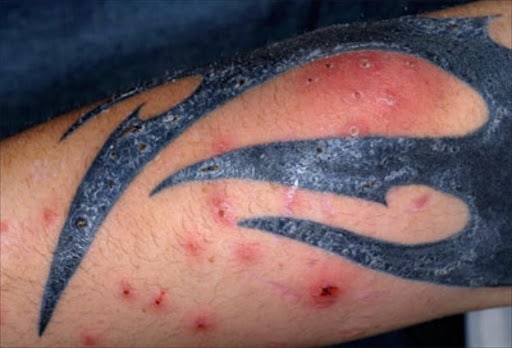
Source: sowetanlive.co.za
- Kristen Bell Tattoos - July 15, 2024
- Risks of Tattooing - July 3, 2024
- Early Tattooing Methods - June 22, 2024

